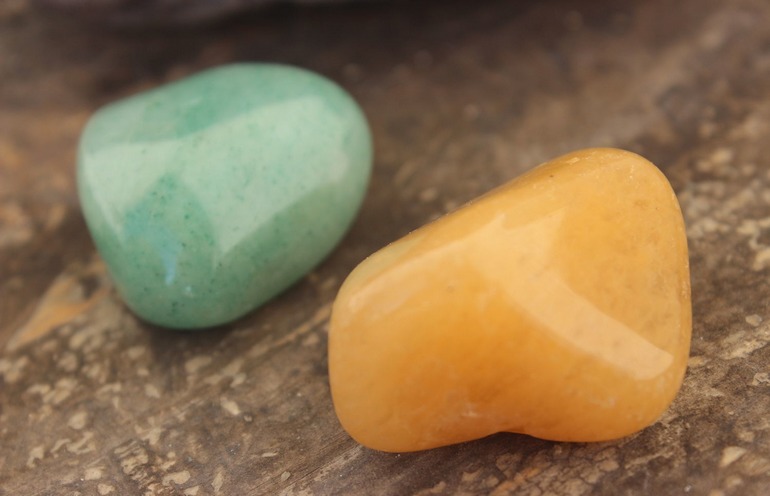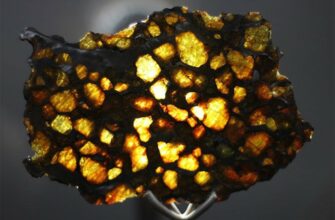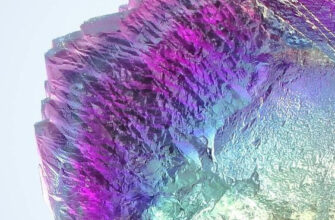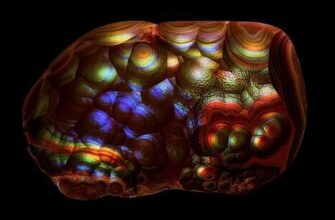The mineral received its name for its resemblance to aventurine glass. Since the Italian glassblowers received this material absolutely by accident, then its name is appropriate: adventurus is translated from Latin as a case.
Synonymous names: sparkling, golden spark, pseudo-zhad, imperial stone.
General characteristics
In fact, aventurine stone is one of the subspecies of quartz, quartzite. That is why aventurine borrowed its properties from quartzite. It is a fine-grained rock consisting of quartzite with small inclusions of hematite, mica or chlorite.
These inclusions reflect sunlight and cause the stone to sparkle and shimmer. Moreover, the shade of shimmer depends on the composition of the mineral and can be gold, silver, pink, emerald.
On a chemical level, this stone, like quartzite, is silicon dioxide. In addition, it contains various impurities that affect the color and shine of the mineral: iron, aluminum, manganese, potassium and others. Depending on the inclusions, the color of aventurine is brown, green, white, pink, orange, cherry.
This mineral, regardless of color, is characterized by the presence of shimmering sparkles on the surface. It is they who distinguish it from other types of quartzite.
This stone is hard and durable, it lends itself well to processing. By itself, it is opaque, but some varieties may be slightly translucent.
Basic physical properties of aventurine:
- chemical formula - SiO2
- glitter - glass
- transparency - opaque or translucent
- hardness - 6,5-7
- density - 2,59-2,6 g / cm3
Varieties

Based on the above differences, the following varieties of this mineral are distinguished:
- Fuchsite is a green aventurine. It is very common in nature. It got its name in honor of the mineralogist I. Fuchs. The composition is characterized by the presence of chromium, which gives such a shade of color. It also contains mica flakes. They make fuchsite shine.
- Honey aventurine is a variety that has a uniform but porous texture. The bright yellow sparkling stone got its color due to the presence of muscovite in the composition.
- Cherry brown is a homogeneous, dense, fine-grained variety of aventurine, which is characterized by an uneven color. This color is obtained due to the presence of hematite in the composition.
- Golden cherry aventurine has a red color with a golden sheen. It is the most sparkling of all aventurine varieties. The stone itself is translucent and has an attractive appearance. It is this type of mineral that can be found most often in the photo as a sample of aventurine.
- The pink variety is a fine-grained stone, sparkles weakly, transillumination up to 3 mm is characteristic. The stone got its color due to the presence of a small amount of iron in the composition.
- The striped spot is white or pink in color with cherry spots or stripes visible. It is this type of stone that is most often used for making souvenir crafts.
- Striped white appearance, characterized by the presence of golden stripes on a white background.
Place of Birth
Thanks to its many varieties, this mineral is found in all corners of the planet. So, in Colorado in the United States, golden stones are mined, in India near Chennai and in China - green. Also in India, but already in the west, blue stones are mined.
In Russia, the yellowish-brown mineral is mined in the Urals. A large deposit is located there, which has been developed since the beginning of the XNUMXth century. Fuchsites of high quality accompany the iron ores in Magnitogorsk.
A large deposit of green and blue minerals is located in Brazil (Minas Gerais). This country is the main supplier of aventurine to the world market. Also, this stone is mined in Australia, Norway, Chile, Spain, Austria.
Since 1810, Aventurine has been mined in Russia in the South Urals. The main attraction of the Taganay National Park is located here.
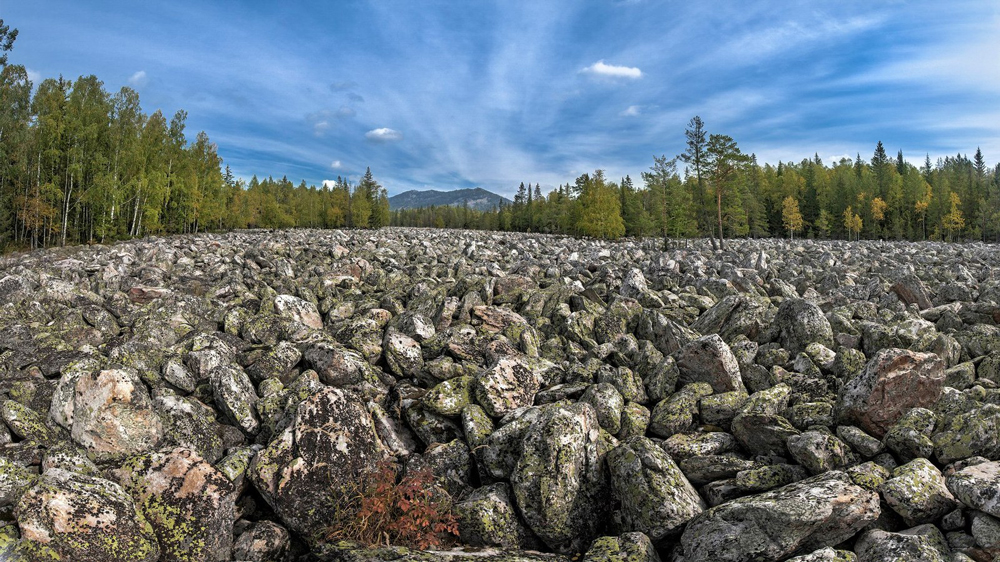
It is an elongated kurum 6 km long and 700 meters wide. "River" consists of huge boulders of quartzite and aventurine, weighing 9-10 tons each. From these multi-ton blocks, masons carved vases and bowls for the Hermitage.
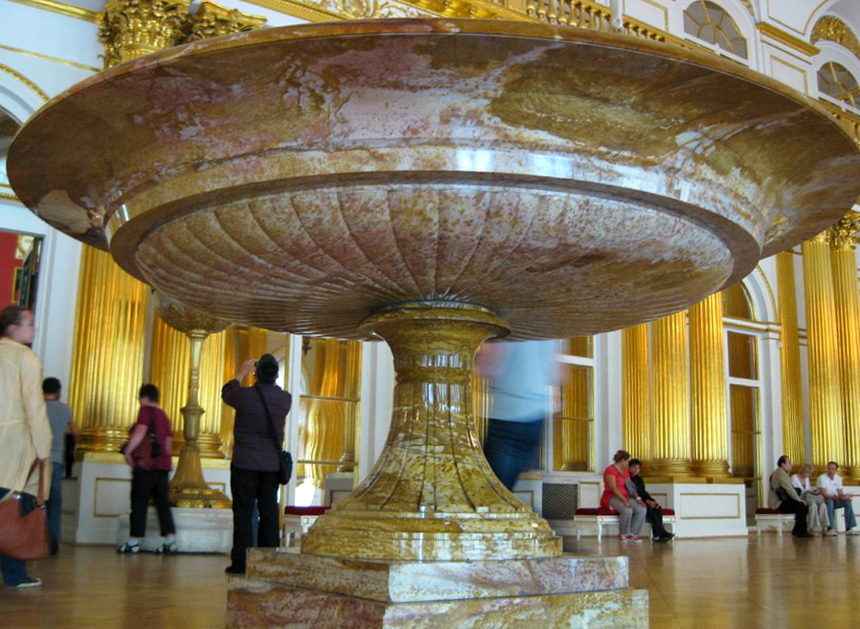
This monumental vase, on display in the Armorial Hall, is one of the finest works of stone-cutting art of the 19th century. The vase was made in 1842 at the Yekaterinburg Lapidary Factory, its diameter is 2.46 meters, height is 1,46 meters, the total weight is more than 4 tons.
The Taganayskoye field is a national treasure, there are few places in the world similar to it in size and beauty.
Application
Since ancient times, this stone has been used as an ornamental material. Stone cutters carved figurines, souvenirs, and figurines from it.
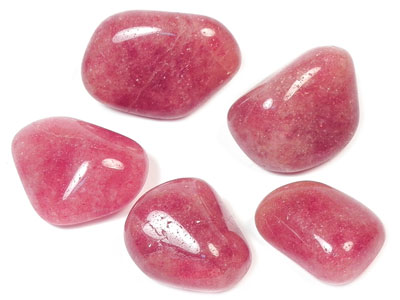
It is also widely used in jewelry. Aventurine jewelry is always popular with buyers. This is facilitated by the various colors of the mineral and the relatively low price. Beads, rings, bracelets - jewelers use it in all types of products.
Today, natural aventurine is quite rare. Most often, under the guise of this mineral, a fake is sold in stores - aventurine glass. If it is important for you to have only a real stone, then the purchased imitation can be safely thrown away.
You don't have to talk for a long time about how to distinguish a fake. It is enough to carefully consider the proposed sample and visually determine its origin. The fake has a very bright color and a lot of glitter. In nature, saturated colors are quite rare. In addition, iridescence is characteristic of a real mineral: in bright light, while turning the stone, a faint rainbow glow can be seen on its surface.
Magical properties
By choosing the right aventurine, you can save yourself from many problems. Types of stone are capable of influencing different areas of life. However, a common ability for all types of aventurine is protection from the evil eye and other types of negative effects. This mineral received these properties and significance in magic due to its reflective surface. All the negative directed at the owner is reflected from it at the energy level.
Other magical properties of a stone depend on its color.
- Green aventurine helps its owner increase their wealth. He is able to attract money, helps to find a good job. Choosing a decoration with green aventurine, you can win the lottery, find a wallet with money. There is luck and luck in financial matters.
- The yellow appearance of aventurine helps to cleanse a person. This mineral is great as a permanent talisman. It can also be worn by people during meditation. Aventurine yellow stone helps to restore physical and mental strength. Therefore, it is shown to be worn by people who work hard exhausting work.
- Blue aventurine patronizes students. He also helps people whose professional activities are related to communication. Such people will gain attractiveness in the eyes of others. Putting on a product with blue aventurine, you can easily find a common language with almost every person.
- Black aventurine has a very attractive appearance. Silver sparkles on a black background are mesmerizing. Seeing products with black aventurine in the photo, many are in a hurry to buy it, but from a magical point of view, this stone has a rather heavy energy, and it should be worn carefully. Crushed into powder, it can become a source of severe mental illness. This quality is successfully used by black witches to induce damage.
- Cherry and brown aventurine reveals hidden talents, protects against disease and grief. Decoration with such a stone will be an excellent talisman for a child. He will lead him through life and save him from dangerous situations.
Who is suitable from the point of view of astrology
The aventurine stone perfectly reveals its magical properties in astrology. Each zodiac sign can safely wear this mineral: it will perform its usual protective functions and will contribute to the development of positive qualities in a person. But for Libra, jewelry with yellow aventurine will be a particularly successful amulet.
The stone has the best effect on this zodiac sign, brings good luck, money and gets rid of ill-wishers.
Medicinal properties
Aventurine is a stone that calms the nervous system, relieves stress, and improves sleep. Lithotherapists focus on how to wear aventurine for medicinal purposes. By choosing earrings made of green aventurine, you can get rid of migraines and memory problems.
Aventurine beads help to normalize the thyroid gland and relieve lung problems. A ring with an insert made of this stone helps to remove excess fluid from the body and helps to lose weight. The yellow appearance of aventurine relieves kidney stones.
Aventurine is a stone as famous and widespread as it is legendary. He holds the palm in the number of rumors and legends associated with him, which are ambiguous just as the mineral itself is ambiguous. It owes its name to blind chance ...
History and origin
The jewelry name of this gem - aventurine - goes back to the Romance languages, in particular, to French, Italian (Tuscan dialect) and their common predecessor - Latin. The Latin root advenio means "to happen" meaning "to happen unexpectedly."
Ironically, aventurine was originally called a fake for this stone, obtained in a glass-blowing workshop on the island of Murano near Venice. In the XNUMXth century, a glassblower accidentally dropped a handful of copper filings into a glass mass - the result was a multi-colored glass, surprisingly similar to the well-known ornamental stone.
The original European name of aventurine has not survived, the gem was "renamed" in honor of a lucky chance. In Russia of the XVII-XIX centuries, a stone speckled with a thousand sparkles was called "gold spark" or "spark"
... There is also such a name as aventurine quartz.
It is interesting! In Russian, the jeweler's name for gold-spark is consonant with the word "adventure", that is, "ill-conceived risky operation, adventure." I must admit that from an esoteric point of view, aventurine lives up to its name 100%.
Physicochemical characteristics
From a geological point of view, aventurine is a type of quartzite with a complex heterogeneous structure. The basis of the stone is quartz, which over millions of years of geological processes has been pressed with particles of mica, hematite, goethite, iron hydroxides and some other substances. The heterogeneity of the structure in combination with chaotic inclusions of coloring substances - chromophores - gives aventurine its characteristic appearance.
| Formula | SiO2 |
| Color | White, pink, yellow, red, brown, green, blue. |
| Brilliance | Bold |
| Transparency | Not transparent |
| Hardness | 6 - 7 |
| Cleavage | No |
| Kink | Crustaceous |
| Density | 2,6 g / cm³ |
Due to the quartz base, it has a high hardness - 6-7 on the Mohs scale. Harder than glass. It polishes well, after cutting it acquires a slightly oily sheen. In some samples, the irisation effect is noticeable - bluish-yellow iridescent overflows at a certain angle of incident light.

Mining sites
Aventurine is a fairly common gem in nature. In Russia, its deposits are located in the Urals, in the town of Taganai (by the way, hence the local name - "Taganait"). Other mining areas are scattered around the world: in Europe they are located in Austria, Spain and Norway, in Asia - in China and India, in the Americas, production is carried out in Chile, Brazil and the United States. It also occurs in Australia.
It should be noted that gold sparks of different colors are mined in different deposits.
... In Asia, green is most common, in the United States, golden, and so on.
Colors and varieties
Aventurine is surprisingly multifaceted - just like His Majesty's case. Its main colors are green, honey, gold, cherry, but the color of the spark is not uniform: the main color is "accompanied" by overflows, stripes, dots and blotches of other colors - white, gray, golden, brown, violet. In fact, the stone is painted with very small specks, and only its background color is uniquely determined.
The least common varieties are pink, blue and black. The last two are valued most highly, as they are very beautiful. Alas, for the same reason, blue and black taganaites are the main objects of counterfeiting.
The stone is not smooth to the touch, but fine-grained. The size of the grain differs in different subspecies, since it depends on the conditions in which the stone was formed. The main types of defects are large pores and shagreen.
The most common types:
- green with dark and light blotches, the so-called "Indian jade";
- golden cherry - burgundy stone with golden splashes, very beautiful;
- solid cherry brown;
- yellow honey tint, characterized by a characteristic "spark";
- uniform pinkish white;
- white banded;
- cherry-white banded.
Blue and blue-black gems are found much less often. They can have golden, grayish, white and purple blotches. The finest grain size is golden cherry, it is the smoothest to the touch. The accidentally invented "Murano glass" with the addition of copper sawdust looks like it... Now it is known as aventurine.
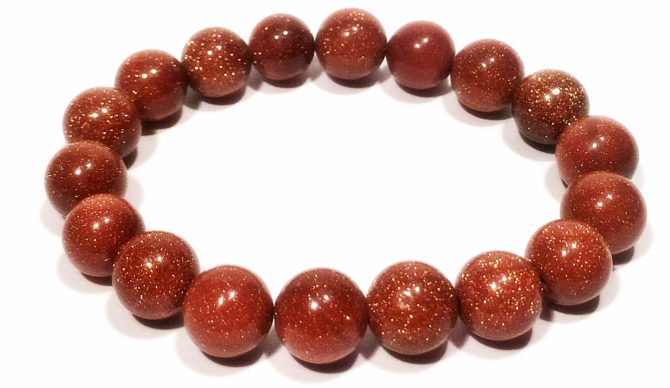
Medicinal properties
In lithotherapy (stone treatment), aventurine is considered one of the most "difficult" stones. Data on the medicinal properties of aventurine vary widely. Probably, the matter is in the species diversity of minerals with this name and their different chemical composition. Aventurine can contain mica, hematite, copper, iron and other molecular formations - it is not surprising that the properties of the stone (of different subspecies) can be very different.
Most lithotherapists agree that aventurine is used to treat:
- dermatitis, including allergic;
- hair loss;
- nervous disorders (for a short time);
- migraine;
- hypo- and hypertension;
- colds;
- inflammatory diseases of the respiratory tract.
In addition, there is evidence of the ability of the golden spark to calm the soul, to rid its bearer of fears of a phobic nature (which have no real basis). But with attempts to use aventurine to treat mental problems, you need to be careful - at the same time as weakening the psychotic seizure, it changes the person's state of mind, giving him lightheadedness.
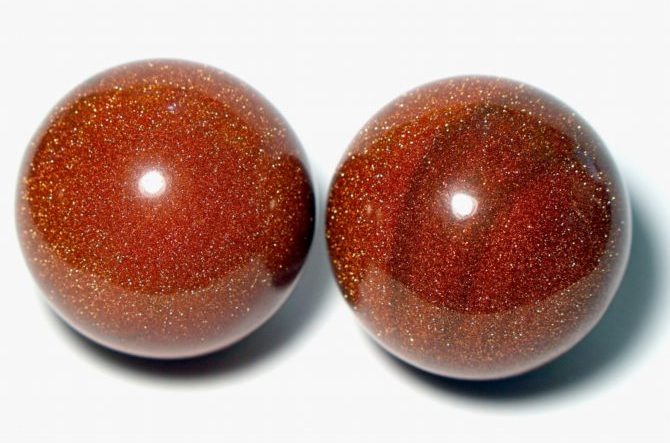
By nature, aventurine is contraindicated for careless and irresponsible people.
Magical properties
The first of the magical properties of this stone is a direct influence on a person's character in the direction of greater carelessness and frivolity. Aventurine, in full accordance with its name, endows its owner with ease in the perception of life. This can be useful for people who are burdened with personal debt, overresponsible and suffering from workaholism. Therefore, natural aventurine is prohibited for people who are overly emotional and naturally frivolous.
.
The meaning of aventurine stone is good luck in its various forms. The pink, gold and cherry varieties of aventurine are prized by gamblers as lucky charms in gambling. To some extent, this effect is due to the stone's ability to sharpen intuition and cause the wearer to feel a sense of self-confidence (and even self-confidence), which is important when bluffing.
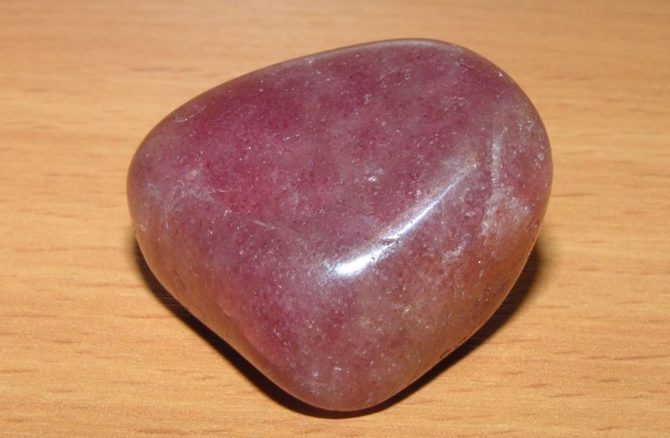
Blue aventurine is the strongest amulet against immediate danger - a car accident, an accidental fall of bricks and other situations in which its owner can be physically injured. It sharpens attention and accelerates response, improving the ability to respond quickly and correctly to emergencies.

Ring with blue aventurine
Green taganaite is a stone of love. It can be recommended to married couples in a state of permanent discord. The stone mutually increases the empathy of people, making them more receptive and sensitive to the needs of their partners, which ultimately leads to the restoration of warm relations in the family.

Rare Black Aventurine is a Sorcerer's Stone. The own magic of this stone facilitates the entry into a state of trance, which is used by practicing magicians for various needs, in particular, predictions and clairvoyance. Talismans and amulets with black aventurine enhance psychic abilities.
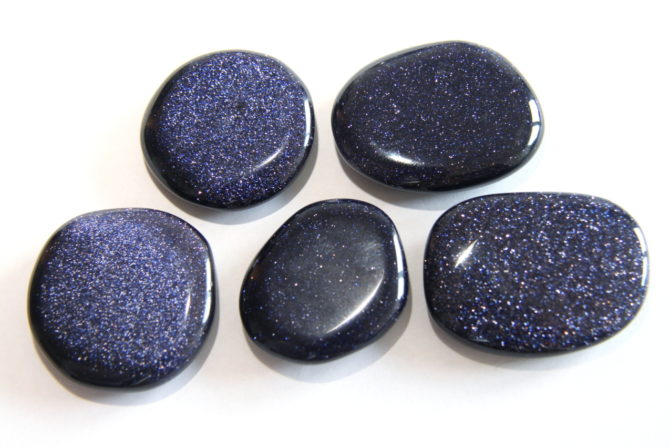
In some oriental traditions, a brown gold sparkle with gold sparkles is considered a stone associated with the worlds of higher beings - asuras and devas. With the help of this stone, you can get in touch with entities from other energy layers, but how to do this is the secret of the Eastern mystical schools.
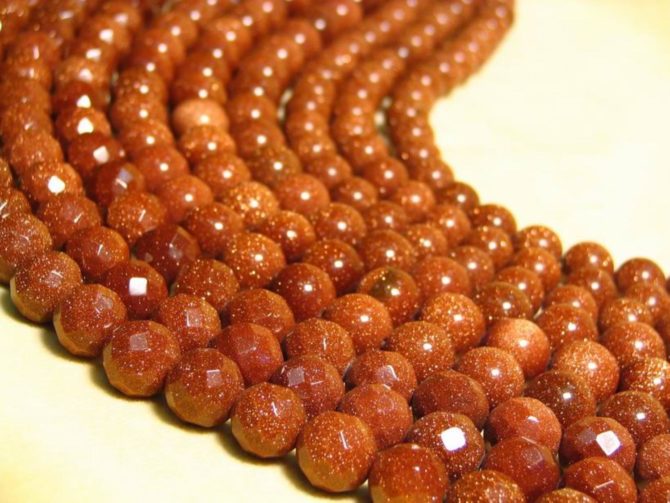
Please note: aventurine loves strong personalities who know their worth and who know how to conduct their business without magical help. But even they are not advised to wear aventurine jewelry for too long, more than two to three weeks in a row. This is as dangerous as an overdose of a medicine: too active attraction of luck will sooner or later overwhelm the cup of patience of higher powers, and serious problems will begin in the life of such a person.
Zodiac compatibility
In astrology, aventurine is optimal for the signs of the elements of the Earth: Virgo, Taurus and Capricorn. This is due to the initial "earthiness" of the representatives of these signs, the lack of the ability to take risks and take with charm and luck. On the contrary, golden sparks are categorically contraindicated for the signs of Fire - Leo, Sagittarius and Aries: there is already too much flame in their lives.
| Zodiac sign | Compatibility |
|---|---|
| Aries | — |
| Taurus | + + + |
| Gemini | + |
| Cancer | + |
| a lion | — |
| Virgo | + + + |
| Scales | + |
| Scorpio | + |
| Sagittarius | — |
| Capricorn | + |
| Aquarius | + |
| Pisces | + |
("+++" - fits perfectly, "+" - can be worn, "-" - absolutely contraindicated)
Compatibility with other gems
Aventurine quartz refers to stones that combine two elements: Earth and Water. Therefore, it is a rather wayward gem that can behave quarrelsome with many other minerals. It is categorically unacceptable to wear it with "fire" stones - diamond, ruby, heliodor, pyrope.
Simultaneous wearing with Air stones - tourmaline, topaz, amethyst, rock crystal, sardonyx is not recommended, since Air and Water in combination give a storm. As a result of the mutual action of water and air stones, they will begin to work out of order, and wearing aventurine with any stone of Fire will lead to the fact that the latter, being more aggressive, will suppress the action of the gold spark.
Aventurine is best combined with the following minerals:
- heliotrope;
- agate;
- nephritis;
- cacholong;
- jasper;
- jade;
- turquoise;
- rauchtopaz;
- tourmaline;
- Labrador;
- emerald;
- opal.
All these are stones of Earth and Water.
Important: Aventurine quartz is worn exclusively in silver. This stone, like silver, is dedicated to the Moon and therefore is not combined with gold - the Sun (however, it is rarely set in gold, primarily because of the discrepancy in value).
Application
This is a popular ornamental stone that is used in souvenir and jewelry making.... A silver ring with aventurine will suit both a man and a woman (men are recommended signet rings with blue or black taganaite). In addition, beads, earrings, pendants are produced with it, less often - tiaras and other jewelry. A simple pendant with this stone will also look good.

Aventurine is often used to inlay luxury items - caskets and chests; various figures and figurines are cut out of it. The standard cut is a cabochon (flat base and hemispherical top), table cut is used for rings.
This stone is sometimes not cut at all, but only polished. It is quite popular in its "raw", raw form. For the needs of those who are engaged in home handicrafts, aventurine is often produced in the form of spherical or toroidal beads, hearts, fangs, drops, pyramids and similar shapes.
How to distinguish a fake
Unfortunately, fake aventurines are far from uncommon on the market. Most often, "aventurine glass" containing additives: shavings of non-ferrous metals, primarily copper, is given as a real stone.
Distinguishing imitation is simple:
- Firstly, it is bright and contrasting. A very intense color, especially a red-brown, black or blue with bright, well-defined glitter, is a sure sign of a glass counterfeit.
- Secondly, the natural mineral has a greasy, not glassy luster and exhibits an iridescent effect. Synthetic is devoid of these effects.
- Thirdly, in natural stone, the arrangement of inclusions of a different color is chaotic - somewhere there are fewer of them, somewhere more. They are ordered in imitation.
- Fourth, genuine aventurine is harder than glass. It scratches glass, like a ruby or a diamond, but, on the contrary, it is difficult to scratch it.
- And fifth, a natural gem, even polished, rough to the touch. It has a porous structure and feels warm in the hand. He may have flaws and defects, but fakes are always perfect.
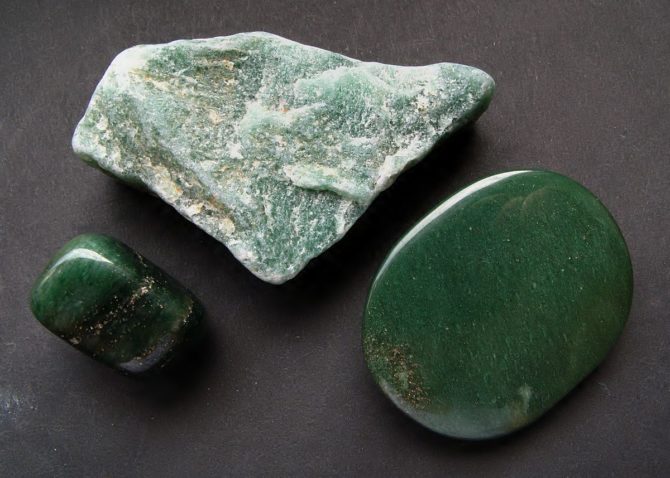
According to statistics, the most often forged blue, cherry, brown and black varieties of stone. Less commonly, green, white and pink.
How to wear and care
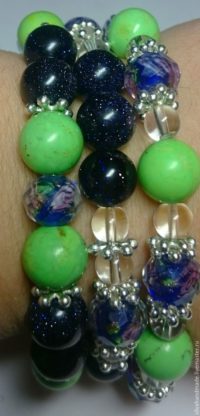
It is easy to care for aventurine quartz - avoid contact with hard objects (other stones, primarily diamonds and beryls, steel), wipe off dirt with a soft sponge dipped in a mild soapy solution. It is best to store a stone or jewelry with it in a canvas or leather bag, separate from other jewelry.
You need to wear the "gem of luck" occasionally. The duration of wearing should not exceed a week. The power of this stone is most fully revealed on the waning moon.
Time to buy
It is best to buy aventurine during the growing moon, a few days before the full moon. The stone will need to "get used" to the owner, and it will be possible to wear it immediately after the night star has subsided.
